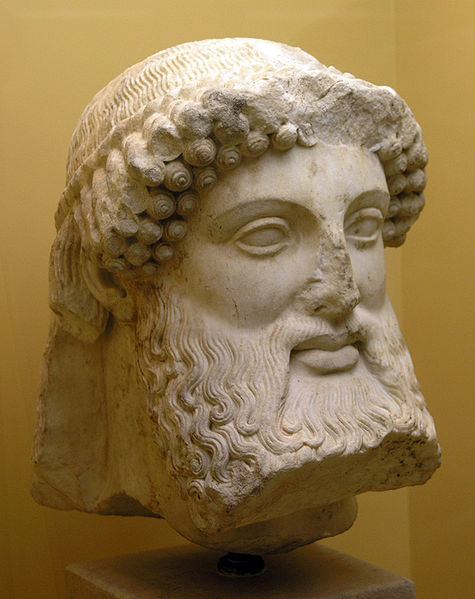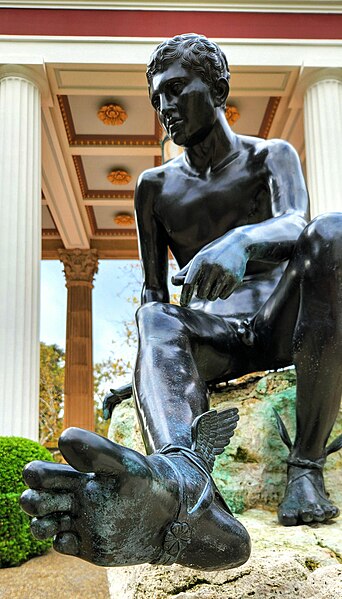A herma, commonly herm in English, is a sculpture with a head and perhaps a torso above a plain, usually squared lower section, on which male genitals may also be carved at the appropriate height. Hermae were so called either because the head of Hermes was most common or from their etymological connection with the Greek word ἕρματα, which originally had no reference to Hermes at all. The form originated in ancient Greece, and was adopted by the Romans, and revived at the Renaissance in the form of term figures and atlantes.
Herma of Demosthenes from the Athenian Agora, work by Polyeuktos, c. 280 BC, Glyptothek
Herma with the head of Herakles (Hermherakles). Museum of Ancient Messene, Greece
Archaic bearded head of Hermes from a herm, early 5th century BC
Small terracotta herm of Hermes
Hermes is an Olympian deity in ancient Greek religion and mythology considered the herald of the gods. He is also considered the protector of human heralds, travelers, thieves, merchants, and orators. He is able to move quickly and freely between the worlds of the mortal and the divine aided by his winged sandals. Hermes plays the role of the psychopomp or "soul guide"—a conductor of souls into the afterlife.
Hermes Ingenui (Vatican Museums), Roman copy of the second century BC after a Greek original of the 5th century BC. Hermes has a kerykeion (caduceus), kithara, petasos (round hat) and a traveler's cloak.
Archaic bearded Hermes from a herm, early 5th century BC.
Hermes' winged sandals are evident in this Getty Villa copy of a Roman bronze recovered from the Villa of the Papyri, Naples
Statue of Hermes wearing the petasos and a voyager's cloak, and carrying the caduceus and a purse. Roman copy after a Greek original (Vatican Museums).







